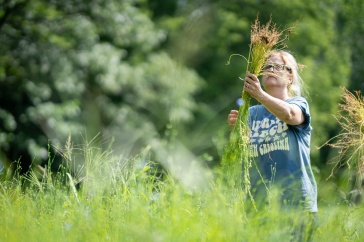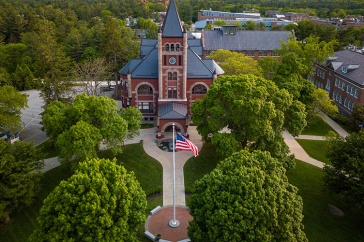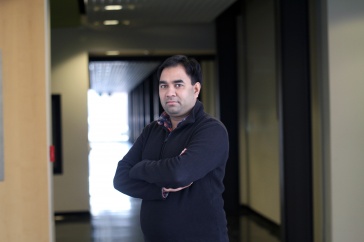It was 1692. Like the rest of New England, Massachusetts was under British rule. It was against the law not to go to church. Puritan doctrine was suspect of anything that wasn't morally pure. Almost everyone, if not all, believed the devil was real.
The colonists in Salem Village, located about six miles from the more prosperous Salem Town, were struggling farmers whose survival was at the whim of the weather and, some believed, the witches whose black-magic curses were blamed for failed harvests, ailing livestock and even the no-other-explanation-for-them-ailments that any of the villagers suffered.
During that period that came to be known as the Salem witch hunt, 200 people were accused of practicing witchcraft. Twenty were put to death; 15 women and five men; 19 by hanging, and one man was pressed to death when, despite the large stones piled atop his body, he still refused to confess to the crime of conniving with the devil.
All it took was two witnesses—maybe harboring a grudge, maybe loaded with fear—to come forward and state that someone was a witch for the accused to be tried and possibly convicted.
"They relied on spectral evidence—the testimony of ghosts or spirits who 'spoke' to people in the village and informed them someone was practicing witchcraft," says Tricia Peone '15, a Ph.D. candidate who teaches a history course on the Salem Witch Trials. "Then, those people would tell the court and the accused would be brought to trial."
Peone is emerging as an expert on the Salem Witch Trials; her research on that dark period is shaping her dissertation as she explores how beliefs about witches and magic changed in the 17th century. The thesis for the master's degree she received from the State University of New York Brockport also was based on the trials. And she designed the UNH course "The Salem Witch Trials" that she has taught for the last four summers and one January term.
"Salem has become the most famous place associated with witches but the first person tried in New England was in Connecticut," Peone says. That was Alice Young, hanged in 1647 in Windsor. Eleven other "devil worshipers" were killed before the Salem Witch Trials began in early 1692 and ended later the same year.
"Salem's was a short outbreak. It was less than a year between the accusations and the deaths," Peone says.
Bridget Bishop was one of the first three women in Salem Village to be convicted of witchcraft, and the first to be hanged. Another of the three was Sarah Good, who was pregnant when she was jailed.
"They didn't kill her until after she'd given birth. She had the baby in jail and it died and then Sarah was hanged. Her five-year-old daughter Dorcas confessed to being a witch and was jailed but wasn't killed," Peone says.
Later, when it was decided spectral evidence wasn't enough to go on, the trials and hangings stopped. Then, in 1711, the state agreed that errors had been made and began paying restitution to the families of those killed. William Good, Sarah's husband, was able to ask for money, Peone says, for the loss of Sarah, the baby who died in jail and Dorcas, whom he claimed was too damaged from the ordeal to care for herself.
None of those found guilty and sentenced to death for practicing witchcraft were burned at the stake, as some people believe. Peone says that punishment was used in Europe for crimes of heresy and treason but in America and England, witchcraft was considered a crime against the state.
The link between witches and ghouls and ghosts and modern day Halloween comes out of the Celtic holiday Samhain (pronounced Sah-ween) that was likely, Peone says, first celebrated thousands of years ago on the eve of Oct. 31 to mark the end of the harvest season.
"Samhain was their new year," Peone says. "The Celts believed that during this time there was less of a barrier between the living and the dead—they believed people came back from the dead. People would wear masks or some form of disguise so the dead wouldn't recognize them and take them back with them. What we celebrate as Halloween comes from that."
Americans didn't really start celebrating Halloween until the late 19th, early 20th century, according to Peone, who notes that in the 1920s and 1930s, the holiday was associated with vandalism. And it wasn't until the 1950s that it became an occasion for children.
"Before then, Halloween was for adults," Peone says. "After that is when it all changed."
-
Written By:
Jody Record ’95 | Communications and Public Affairs | jody.record@unh.edu



















































